Lately, competition has been getting fierce in the 4X genre. This has caused a surge of titles that are either trying different approaches to the genre, or those that are trying to stay true to older formulas but still bringing in their own ideas to the table. One such title is trying to do the latter is Stars in Shadow by Ashdar Games. A small indie studio that was recently acquired by the publisher Iceberg Interactive. Their game just hit Steam E.A. on September 15, 2016.
The game is a turn-based space 4X game with turn-based tactical combat and a detailed ship designer. The game has its own distinct art style, a colourful and rich design that is iconic to several comic and animated series. The game also tries to have its own take on planetary management to help minimise micromanagement and the ship designer is based on specific hulls types with allocated hard-point slots.
You can go check our first preview and our even earlier Stellar Indie Venture to get a good idea of where the game came from and some basic overview of the game’s core mechanics. Though the articles are dated with some respects, both contained interviews which gave glimpses to the game’s vision and direction.
I decided to keep this tradition alive and decided to do another interview while previewing the E.A build of the game. Sven Olsen and Jim Francis (Arioch) were kind enough to indulge me in my curiosity. One of my questions was about the point I bring up in my preamble that the genre is getting competitive and what they hope to bring to fans with Stars in Shadow:
“Many of the recent games in the genre have moved to streamlined real-time tactical combat; we think an engaging turn-based tactical system is still essential to a good turn-based 4X game. In our strategic system, we have tried to reduce unnecessary micromanagement while maintaining depth of play, and to increase the sense of character in the ships, planets, races and factions that you’re interacting with. We want a game that really plays well, rather than one that is just a long list of features.” – Sven Olsen and Jim Francis
Only time will tell if they achieve this but so far it seems they are still on track with their goal. Now onto the preview.
Features (from the Steam store page):
- Epic Scope: Starting at the dawn of interstellar travel, progress through four eras of technological advancement. Discover the science of planetary terraforming, upgrade your infantry battalions to battle mechs, and grow your fleet from a squadron of destroyers to an armada of planet-destroying Dread Stars.
- Varied Factions: 7 Playable factions comprising six alien races. Each faction has different research strengths and technology options. Forming alliances, conquering neighboring species, or discovering ancient artifacts may open up additional avenues of research. Choose your race wisely as it impacts which worlds will suit you, what trades or alliances may be offered, and whether or not your neighbors are inclined to trust you.
- Stylized Setting: A distinctive comic-book art style and an original, detailed universe backstory draw you into an immersive game world. Interact with a unique cast of alien characters, make friends and influence people, or crush your enemies and see them driven before you.
- Focused High-Level Strategy: Build a vast and varied empire, taking advantage of the unique traits offered by different alien populations and the worlds they inhabit. A streamlined resource and planetary improvement model keeps the game moving even when your empire grows large.
- Deep Turn-Based Tactical Combat: Face off against your opponents in complex 2D turn-based tactical battles. Counter your enemy’s missile barrage using point defense or interceptors, then close to energy weapon range! Stars in Shadow’s tactical engine includes several features rarely seen in turn based games. Multi-ship commands keep even large fleet battles fast-paced, and smart unit behaviors allow tight control with minimal micromanagement. Auto-resolve battles that are a foregone conclusion, while retaining the ability to replay any engagement to see exactly what happened.
State of the Game
The game is still in development, there are several UI elements that are till waiting for their improvements and the technology system is not complete as several late game techs are not yet implemented. Some art assets are still missing and diplomacy is still bare bone, so the game still has a long way to go.
Personally, I did get a few bugs but no crashes. So the “still in development” is obvious, but the game is functional. However, the game is still fully playable. The mechanics that are in work and the core components are functional. I naturally asked what are their immediate plans for the E.A. and how players can keep track of the game’s development:
“We’ll create (and work to maintain) posts on the Steam Forums explaining what our roadmap is for Early Access and where we are along that road. At the top of the list of new features in EA are the Galactic Council victory conditions and a strategic map zoom feature.”
Recapping the Old Coverage
Combat, the ship designer, and the tech tree didn’t see much change in terms of core mechanics and visuals from my previous preview. Naturally, there were balance passes, techs added (and removed to be re-balanced), and other improvements but what I have said about these mechanics specifically still stands, thus my previous preview is still a good source to get an idea how these systems work.
My overall opinion of them hasn’t change, I like the format they used for ship designs where the player unlocks hulls which have fixed hard-points that the player fills with the appropriate modules. The system is still flexible and gives dedicated ship types which are all visually represented by their own graphics with each race having their own.
Also, even with the incomplete tech tree we already have a huge selection of diverse weapon systems which have their own strengths and weaknesses. There are even several highly specialised systems including boarding pods for capturing enemy ships. I did mention that the UI needs some love so I asked what we can expect as improvements:
“We have mock-ups for a revamped ship designer pane that includes better color-coding and iconography for the various slot and component types, and this should be implemented sometime during the first few weeks of the EA.
A technology screen revamp will come later. At a minimum, we’ll be improving the panes to bring them up to spec with the rest of the UI. But I’m hoping we’ll have time for a more significant revamp. Just how the technology screen evolves between now and release is one of those things that’s very likely to be influenced by the feedback we get during the EA.”
Now onto the features that have been added and significantly improved.
Planets!
The planet management system saw the most improvements from my previous coverage. The basics are still the same, the player colonises planets and has a limited number of slots based on population and size that can house infrastructure. Population has an effect on how specialised a planet can get, with certain infrastructure needing less population to specialise for.
The other interesting aspect is that planets have biomes, and each race have preferences. Thus mixing populations can significantly raise the max population. A good example is having humans and aquatic aliens on an Earth-like planet.
The game has also added morale, which still needs to be expanded on but introduces the need to keep your population happy or risk planetary rebellions. Infrastructure is also automatically upgraded with tech so the player doesn’t constantly need to build new structures with each new infrastructure technology.
The most interesting aspect is the addition of food and metal. Food is what many classical fans will remember, being able to choose being self-sufficient per-planet or have bread-basket planets feeding your hungry production worlds. The game also has freighters the player can build to be used as transports for food exports.
Metal is the resource used to produce ships and space stations. This is stockpiled and shared globally. The player will have to dedicate infrastructure slots to produce the metal their industry will need to build their space fleets.
I actually like this system combined with the limited slots for infrastructure. The player will now choose to colonise planets for the purpose of developing agricultural and mining colonies, while having industrial sprawls, commercial hubs, or high-tech planets which are dependent on these resource worlds.
This also gives interesting choices, finding a high population fertile world that has a rich mineral standing. The high population will be perfect for markets, factories, and labs but you’ll need food which this world can also provide at the expense of something else. If you chose to take advantage of the mineral wealth, then that is less of anything else you can build on that world.
Naturally, I was interested to know what motivated the developers to introduce these resources, especially metal since few games decouple resource extraction from production:
“That’s pretty much it. Adding food and metal allows some clear specialization that makes intuitive sense and adds to the depth of the virtual world, but doesn’t add unnecessarily to player micromanagement. You can play out those sci-fi tropes of the inhospitable mining world, the mineral-poor farming world, or the planetary megacity that relies on food shipments from the rest of the empire to sustain itself.”
This lead me to wonder their overall strategies to help make planets more distinct and encourage players to specialise their worlds:
“The addition of food and metal as core mechanics did a lot to encourage specialization in your colonies. And we think the addition of population morale and the expansion different population traits will further enhance this. At EA launch we’ll have 12 minor races in addition to the 7 major races, and they each have different environmental requirements, production strengths and weaknesses, and different perks and personalities. How to make best use of a planet has a lot to do with who you have living there and what the local biomes are like — Orthin are strong in science but require deep ocean; Tarib excellent miners but require an infernal Mercury-like environment; Spice Mongers can produce good economic yields on desert planets; the slow-moving Wrem have substandard production yields but can live on any airless world, etc.”
Terraforming is not fully implemented either but we start seeing a bit of how it works. Unlike in so many other games you are limited by how much you can terraform a planet, and technologies unlock just how far you can go but it never allows you to Gaia-form every planet. So I wondered what the end goal of the system will be:
“The game sets limits on what sorts of transformations you can make based on the planet type and position in the star system. So even with the best endgame technology, there’s still some variety in what the “optimal” end condition of a planet will be. That said, full terraforming is an endgame technology, and so by the time you gain the ability to transform planets at will, you will probably have met or be close to meeting one of the victory conditions.”
Personally, I don’t mind mass terraforming, my only issues with how other games have handled it is that it’s either too easy or can happen too early in the game. Hopefully, the game will maintain its tighter restrictions on how far you can go or at the very least save the more drastic transformations for the late end-game.
Diplomacy
Diplomacy has been added recently but it’s still bare-bone and several systems are not implemented into it yet. One such system that still needs to be implemented is the issue and event system. These will play an important role in diplomacy by giving the player situations they need to deal with which will influence their diplomatic relations.
This reminds me of another system the game uses while you explore, you get random events that sometimes require the player to make a choice. This too is not fully implemented but the early version of these events are in. Here is what the developers had to say about these mechanics and if there will be any overlap between them:
“The diplomacy system revolves around “issues” with other factions created by interactions with them (making or breaking a deal, colonizing a system they wanted, engaging in behavior they like or dislike). The list of issues tells you not only what the other faction thinks about you and why, but in some cases offers the ability to do something about it — allowing an issue to be settled, removing a reputation hit for a misdeed by making reparations, for example. Much of the work during Early Access will be adding meat onto bones of this system, adding more issues, more interaction options, and more customized dialogue to go with them.
The event system is a way to for the game to create issues outside of direct player behavior. An event may take the form of a traditional 4X game event like a natural disaster, or it may just be an action cue for an AI faction (“I must have that planet!”), but in most cases events are mainly designed around driving interactions with the other factions.
Encounters during exploration (finding a derelict spacecraft, or discovering a new native race on a planet) are separate from the event system, but they will in some cases tie into the issue system. Some minor factions can be interacted with using the same diplomacy system as the major factions.”
Even in its bare-bone state, the overall diplomacy system seems to be build around helping with immersion. The menu is build to make it look like a conversation menu while maintaining the functionality of a diplomacy UI. The player will also be able to deal with minor factions like splinter colonies. Also the interface is good at giving the player a lot of data about the empire they are talking to and the reasons for their current diplomatic stances.
Planetary Invasion
Planetary invasion has been expanded, the systems is still an abstraction but it blends simplicity with the need for player involvement. Your loyal population composes your militia and can also be loaded onto troopships to be used as ground forces. The player can also build armor units, which can be used as heavy defense, keep control of rebellious planets, and naturally to invade other planets.
The system has a detailed UI where the player can perform orbital bombardments and see their results immediately. When the player feels ready, they can drop their troops and see the final results. All the little nuances are in there like buildings being destroyed and civilian populations getting killed (including civilians that would be happy for their liberation).
Overall Impressions
Before diving into my overall impressions, there was one more question I had to ask. Since the late game is still a little light in completion I decided to ask them about victory conditions:
“The primary win condition (aside from outright conquest) is a Galactic Council election, which can be won through a variety of methods: you can gain the votes you need through gaining allies, by conquering enough population, or by other nefarious means. We would also like to add some secondary quest-related win conditions as well, which involve the player completing a specific set of objectives.”
Now for my overall view. Firstly, with the game still heavily under construction I do reserve making any definitive call on the game, above and beyond what we normally afford when dealing with any E.A. or in beta-phase title.
However, I need to say that I been looking at this game for a long while and seen it come a long way, so I do believe the developers are committed to finishing the job. Also, from what I played, I believe the game does look promising.
The mechanics they use for planetary management does cut down on micromanagement when compared to other games since most worlds will be fire-and-forget once you have developed them. You will only have a few production powerhouses since you are still bottlenecked by your metal supply. However, you’ll still get moments of intense management when you research +1 infrastructure slot and have 20+ planets.
As I mentioned so many times, I really like the ship designer but I am hoping they do improve the UI for it. I like the criss-crossed nature of the tech tree but there too an improved UI would be nice.
Ship combat is what you’d expect, and what I think many would like to see. Turn-based, shield facing, ship positioning, PD weapons that fire reactively or actively, and all the good stuff like fighters and boarding pods. The fact you can move similar ships as a squadron is also useful at managing movement and looks good when they fire together.
Diplomacy is still bare-bone so I can’t say much about it. However, I do like the attempts to make the game immersive. This is one thing I will definitely say about Stars in Shadow, it’s immersive. The art style might not be to some people’s liking but it does add to the setting, giving every aspect of the game its own personality.
Personally, I have grown a little tired of the monochrome look so many other games tend to use, so big colourful and stylised is actually welcomed. Also, my gaming golden age was during the time this art style was very popular so it does kind of send me back to my younger days.
Another aspect that many fans of the classics would be pleased to see is the use of free movement and range limits. The player can upgrade their speed and range with several technologies (and improve range with ship modules as well), and build outposts to extend their range out from their colonies even more.
Naturally, this is still an E.A. game and a lot of what I say may change over time (hopefully for the best and not the worst). E.A. is for the truly entrepreneurial who is willing to take a risk and help out in the development of a game, or for the overly dedicated fan that wants to support a game in development. As always, we will continue to offer coverage and a full review upon release.
Stars in Shadow is normally available on Steam’s Early Access program for $24.99 USD. Currently there is a special till September 22, 2016 where the game is available for $19.99 USD.
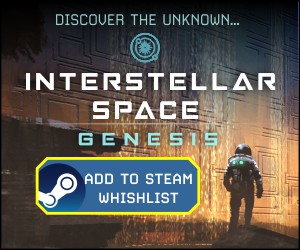
27 Comments
Related Articles:
- Planetary Annihilation Gets Funded With $1.3M To Spare!
- Stars in Shadow – Early First Impressions and Interview
- Beyond Beyaan Preview
- Astriarch – Ruler of the Stars: New Indie Space TBS Gold 1.0 Released – First Impressions
- Predestination – Early Access First Impressions

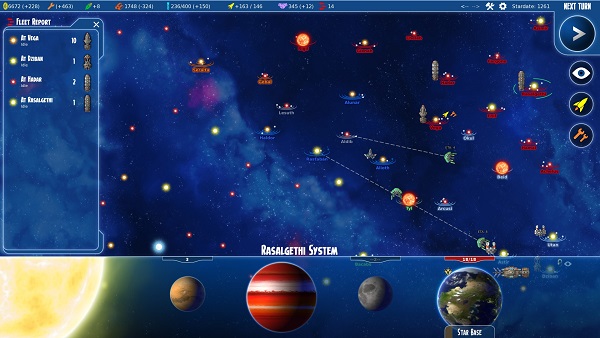
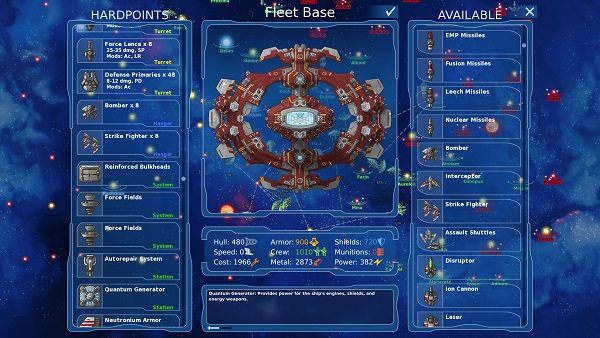
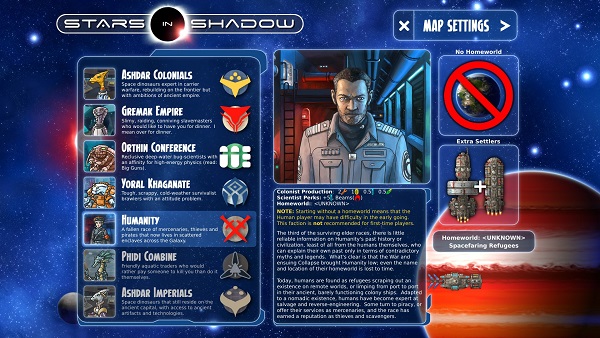
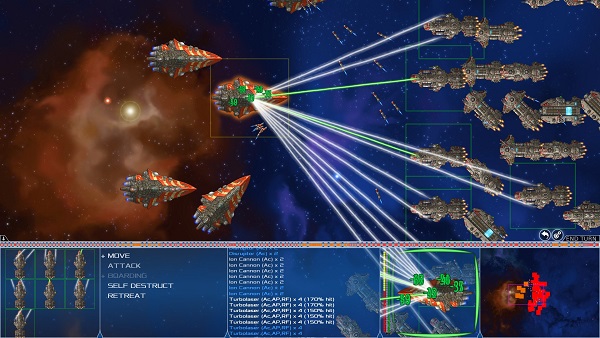
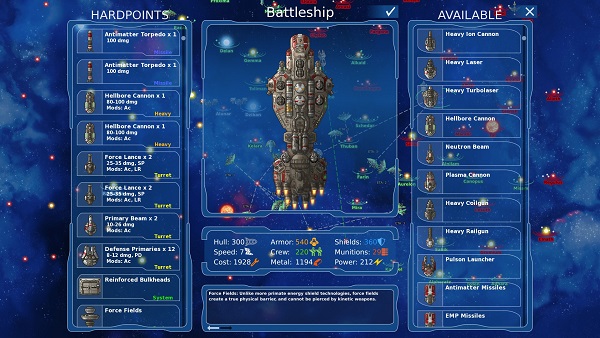
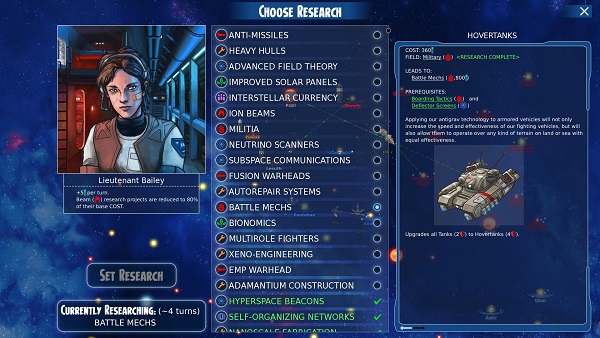
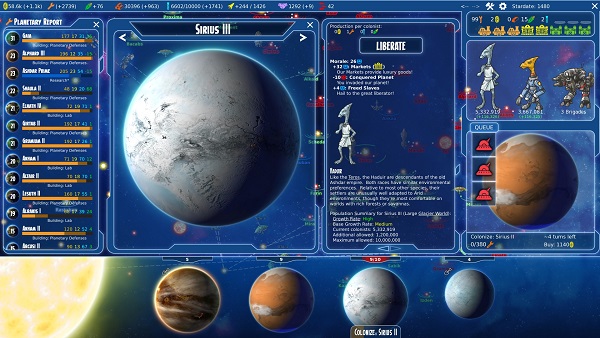
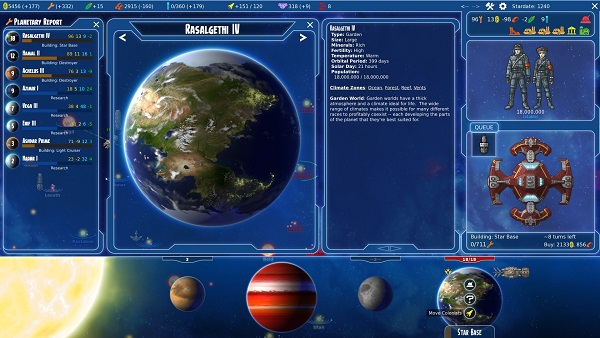
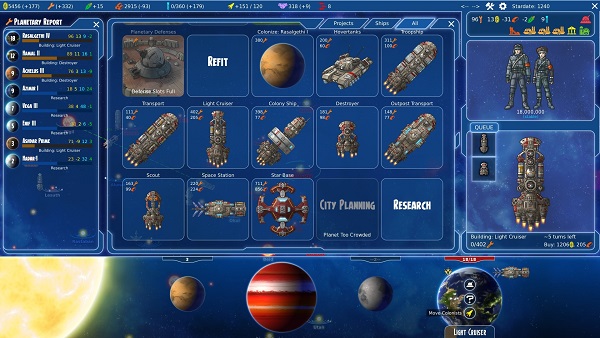
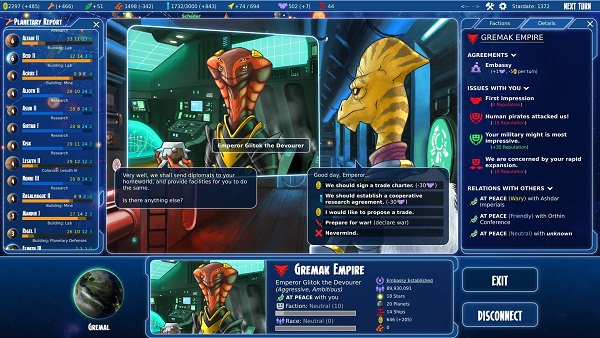
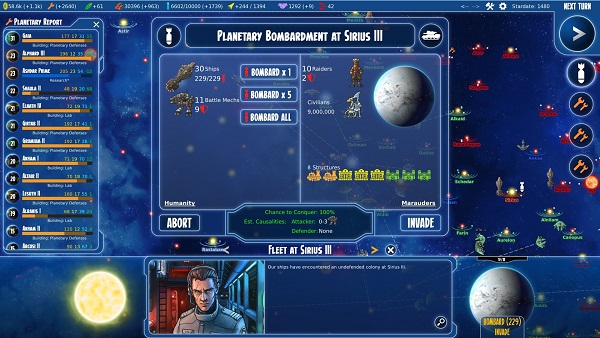
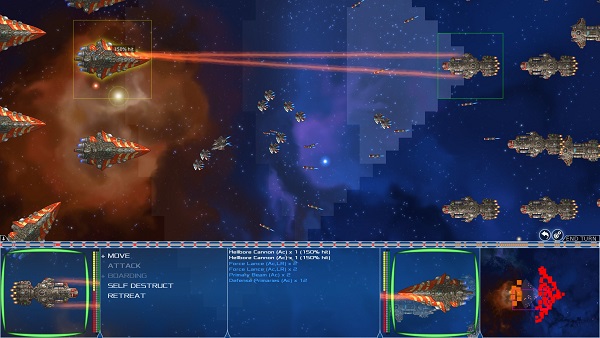
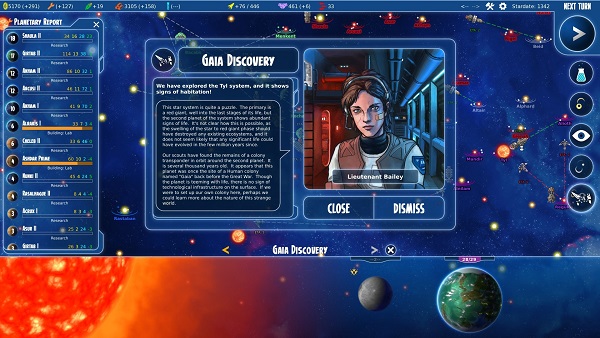
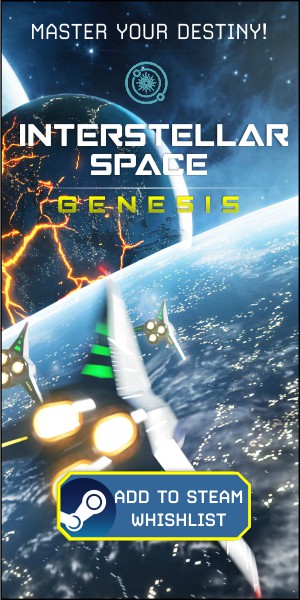


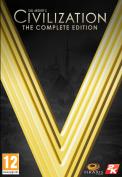


Sounds very interesting so far.
My only question concerns galaxy setup, especially size (bigger is always better).
I’m not usually one to remark on graphics but somehow they rub me the wrong way.
Maybe I’ll get used to it.
I will keep an eye on this.
You can never have too many 4X games in the making.
For me, as long as the art style isn’t Picasso, I am happy.
Yeah, I did mention some people wouldn’t be too pleased with the style. This has nothing to do with my personal taste. Personally, I actually like it. However, when you have richer (in terms of colours) and more distinct art styles, personal preferences start showing up more.
This will sound weird but you do have “safe art styles” which a lot of games have been using for awhile. It doesn’t mean you can’t diverge from it or have areas that have your own distinct styles, but if you keep within certain boundaries in several areas you are less likely to off put anyone. You are also more likely to have your visual design be more forgettable as well.
Fortunately these are video games and not portraits, so the gameplay becomes the real measure of merit and if a game is truly memorable or not.
I understand the attraction for bigger galaxies, more mysteries more to explore more immersive, more adventures etc…
But it doesn’t always work. Stellaris is obviously geared very well towards massive galaxies and thousands of stars, but it has the management systems to deal with that, it has the DLC’s and empires and diplomacy and intrigues and discoveries to keep this interesting, and more importantly it has a large team to design and program all these mechanics.
Stars in Shadow has a maximum of a hundred stars, and that is enough. 40 planets (you can win the game once you have this many)is enough to manage when you have to do it all yourself, there are no planetary governors, no complex sector controls. everything is micro-managed and everything is down to you.
Apart from creating a management nightmare, haveing bigger galaxies would also extend the length of the game, meaning more discoveries more technologies and just more mechanics to keep things interesting.
Bigger galaxies would create various problems for Stars in Shadow, but as it is, there you can have short (<15 hour)games, covering all the main features in the game, and have a lot of fun.
This is a pretty simple 4X, but it is very nicely made.
I’m sure I’m in the minority here, but I find turned-based tactical combat in a 4X or grand strategy game to be tedious. The leader of an entire civilization, planet or country would not be in tactical control of fleets and armies; thats why you have subordinate generals and admirals. I’d rather have AI fleet/army leaders that can learn or be replaced and stick to the grand strategy aspect of galactic war.
I’m also with Vendor on comic-book or cell-shade art: fine on RT games (seems to improve frame rates) but I’d rather see photo realistic art (or at least an attempt at it) in more static turned-based games. I know it is just eye-candy, but it improves the experience.
Just my personal preferences, I guess.
I get where you are coming from. However, plenty of games have hands-off combat, cinematic only combat, or real time tactical combat. Turn-based tactical combat is a bit of a rarity, so I imagine players that really like it are a little hungry for it.
I really enjoyed the detailed turn based combat in Moo2, but that doesn’t mean I think every 4X game should have detailed turn based tactical combat. It would, in my opinion, be silly in games with more detailed empire management, such as the Civ games.
I do detest when 4X gamers whine about every game released, if it doesn’t have every feature present in their exact vision for the genre. Worse, is that developers listen to this and try to shoe-horn every feature possible into their games, ending up with a mess.
This game seems to be putting more focus on tactical combat and less on empire management compared with say Endless Space 2, which has some really interesting ideas at the empire level and streamlined combat. There is certainly room for both in the genre and, if I had the free time, I would probably play both.
That said, I am not enamored with the graphics style. Too cartoony and too blue.
I understand the frustration that when a new game comes out you have people that are picky about the features always dredging up the same old complaint list.
However, the hypothetical situation you allude to doesn’t exist. Turn-based tactical combat is not the norm. The closest you get is having no tactical combat in a turn-based game (like Civilization). However dedicated turn-based tactical combat is rare unless that is the main gameplay element like XCOM.
At least with space 4X games. You do have it in fantasy 4X but you have people that only like space 4X or just dislike fantasy. So for those, that niche is not really being filled.
Is it annoying seeing people scream “where is the turn-based” in every 4X that doesn’t have it. Perhaps, but’s not like those games are common in the space 4X sub-genre and the 4X gamer horde shows up to enforce conformity.
What you have is people that haven’t gotten what they like and voicing their frustration.
I am going to actually drop a radical notion. If you actually had more tactical turn-based tactical combat space 4X games that is not 20 years old or got a 3 from most reviewers, you’ll have less people whining about it in the forums of the games that don’t have it.
Only the hungry protest, not those that are satiated.
People are not going to buy what they don’t like. If they haven’t played something they liked for a while they will be more obnoxious when it is not being offered. Should someone “take a dump” on a game that didn’t cater to them. No, but one shouldn’t be surprised that they would.
Oh, here is the kicker, I actually prefer real-time combat and don’t mind cinematic only combat. So why am I defending the turn-based tactical crowd? That would require someone to understand my personality.
What I am saying is, yes it’s annoying that so many games have people ranting they want turn-based tactical battles. However, I’m aware they are not really serviced at the moment either.
Actually, if you ask me, I think there was a serious lack of real-time tactical combat in the fantasy genre. Total War: Warhammer alleviated that. However, it would still be nice to see a few more pure fantasy RTS. Warcraft is getting a little dated.
Lastly, it is easier to ignore comments from obnoxious players in a forum than it is for someone to ignore they don’t have their dream game (or at least a more recent incarnation that doesn’t need a DOSBox to run). I am lucky, I have my dream game, well games, but many don’t.
Great post Edward, can’t seem to reply directly to you. Not much to respond, what you said makes sense. I’d like a replacement for MOO2 also. This game looks the closest thing by far I’ve seen recently.
Regards fantasy RTS, I think MOBAs have well and truly taken over there. Which is a shame for me, as Warcraft 3 is one of my favourite games, and I just can’t enjoy MOBAs.
You can say that again, deep detailed tactical combat in a space 4x is as rare as hen’s teeth. Only Moo1, Moo2 and SOTS have really made decent attempts at it. I’m definitely hungry for a modern space 4x where you *dont* just sit there and watch it play with itself.
My real gripe is with turn-based combat in a 4X game, not tactical combat. SoTS (RT tactical) is a perfect example: you can affect the outcome of each battle with judicious commands, but no battle lasts more than 3 min (default) so you never get bogged down with individual combat. In MoO2 (and apparently Stars in Shadow), late-game combat required the player to move and shoot dozens of ships each battle, and (IMO) that gobbled way too much time and became boring. As often as not, I would ensure that I outnumbered the enemy and auto-resolve.
Reply to Jeff. To my mind, a solution to this problem is to hard limit the number of ships you can build and support. Moo2 was most fun in the early and mid games when you had much smaller fleets and individual decisions made in battle really mattered. Late game, I agree, it just became a chore.
Ascendancy, whilst an awful game in many respects, used a system whereby your home system could support two ships and each subsequent system added an additional ship. I think Moo2 would have benefited from something similar.
Obviously, there is also room for games with huge homeworld style battles, but I think real time makes more sense for these. Now, if justification is needed in terms of realism/lore, these limits could be explained by interstellar capable ships being an enormous project for a civilisation, akin to wonders in civ games. It is not so uncommon in sci-fi movies and books to have small numbers of ships in battles. I think it could work in 4X games.
@ Jeff P: True, those battles could get pretty huge, but one man’s boredom is another man’s fun. I loved those massive battles in MOO2 and used to play them out even when I knew I could win with no losses by hitting auto.
Also by the time battles became that large (only in late game) you were usually dominating and could confidently hit the auto button to sit back and watch or the “Z” key to end the battle in a second or two if you wanted it instantly over. So honestly I dont really see the problem with TB tactical combat, especially in MOO 2 where the devs gave you several options to auto-resolve it at will if you ever got bored.
In a TB game where they gave you NO option but manual I think you would definitely have a good point but in MOO 2 you could……
1) Auto resolve instead of tactical.
2) Resolve manually in full TB tactical.
3) While in manual hit the auto button at any point to watch the battle play out rapidly and take control back at any time if you want. With an indecisive battle this can whittle the numbers down enough to be manageable so you can take control again.
4) While in manual hit the “Z” key at any point to instantly resolve the remainder of the combat in about a second or two no matter how large it was.
To me that seems to cover all the bases nicely…..
@ Mark
Have to say that, for me, none of those options are satisfying. In a game where the turn based combat was fun in the early and mid game, I don’t want to have to start auto-resolving battles unless they are one-sided cub stomps – which aren’t that fun anyway. If the turn based combat is fun, I want to be doing it the whole game.
I found Moo2 combat fantastic fun in the early and mid game, but a chore in the late game. I think this is a not uncommon view to hold. Auto-resolving in part, or in full, is the same as using the computer to manage your planets or cities when you have too many. Yes, it cuts down the micro management, but this is a game not a job! I’m not looking for ways to make the job easier, I’m looking for ways to keep the game fun!
@ neil: I get the point you’re trying to make but I honestly dont think there’s any satisfying resolution. If you find large tactical TB battles cumbersome and boring and you dont like options #3 and #4 then the only alternative is to never play games with large TB tactical battles. There’s no way to somehow make them interesting to you. As you pointed out, SOTS is a good example of deep, detailed tactical combat where the battles never drag on for too long or become too large.
Fortunately for me I didn’t find MOO 2’s huge tactical battles to be cumbersome or boring at all, I loved playing them out manually and I honestly dont remember them taking too long. There were a few times where I used some of the speedier options but they were the rare exception rather than the rule. However when I needed them I was very glad that those options were present. I think the MOO2 devs really did try to think of every practical option to make things fun but it was simply impossible to completely satisfy everybody’s tastes.
Well, despite it’s flaws, Moo2, along with Stars!, were my favourite space 4X games. Now a Moo2 clone where the number of ships were limited, such as how later civ games limited the number of cities, would be ideal to me. In fact in single player, I remember playing Moo2 with a self imposed limit on the size of my fleet. Still, would prefer a game which was designed with this in mind.
However, I am the only person I’ve spoken to that shares this view, so it is unlikely I will get my wish.
I also dislike immersion breaking pirates in these games (whereas I loved Moo2s space monsters), but seems most people love pirates. I just play what looks decent and make the most of it. Endless space, for example, was far from perfect, but I still got enjoyment out of it.
@ neil: If you like games with deep TB tactical combat and small fleet sizes try a little indie game called “Starships Unlimited”. Pretty horrible name but the gameplay, especially the tactical combat is really great. And the number of ships per battle is very low, its usually only one vs one but the biggest battle I’ve ever played was about 7 or 8 ships vs about the same. Easily manageable and lots of fun, you can automate everything or take total control yourself.
Absolutely love the idea of deep, thoughtful, *controllable* turn-based combat in this game! Its about time someone gave us decent hands-on combat after MOO 4 totally dropped the ball with their lousy, shallow, casual-friendly excuse for a sequel. The last time somebody went even close to this deep would be SOTS so these guys *really* are doing something quite unusual here in making a 4x with real tactical depth. It sets this game apart as attempting something that only MOO1/2 and SOTS have ever really succeeded at and no other 4x has even come close to matching. Hopefully it will attract lots of space strategy fans who have been starved of serious tactical depth for 20+ years.
I do understand Jeff’s concerns but honestly the very last thing I want is a “space emperor simulator” where the only mechanics allowed are strictly things an emperor would do. I want to do all the fun things (like tactical combat, exploration, espionage and ship design) that emperors *dont* do.
I do however agree completely about the cartoony art style, sadly it does absolutely nothing for me at all and I would much prefer something more realistic. Thankfully though graphics would have to be my least important consideration and if the game ends up being good, the fact that I’m not a fan of the art style wont even slightly factor into my purchasing decision.
Another big plus is that it seems to be using free movement rather than starlanes. Way too many modern 4x space games are infested with those horrible things and I find them a great detriment to immersion, not to mention simplifying defensive strategy to the point that it becomes a no-brainer to just blob the nearest choke point and wait. In a free-movement game you actually have to think about defensive strategy which is great.
Thanks for the great preview Edward, I wish these devs the best and I’ll be crossing my fingers that the game meets its potential.
The game uses the good old free movement and range limits. Techs improves speed and the range, and you can build outposts as well. It’s pretty much similar to the system of travel you had in the originals.
Thanks for confirming, I’ve passed on some of the most recent 4x games largely because the forced starlanes really kill immersion for me, the only exception was Stellaris and then only because you can completely turn the annoying things off and play with only free movement.
I’ll almost certainly be buying this one (despite the artwork) just to provide encouragement and support for a group of devs who believe that good 4x game design involves Free Movement and Deep TB tactical combat. Wouldn’t mind seeing more of those.
Yeah, I actually updated the article so others who are curious about it can get it straight from the article itself.
Good review, Edward. Thanks!
I’ve just purchased the game and only played about 30 minutes, but so far I like what I see. I neither like nor dislike the graphics; it is what it is and if the game is good, I really don’t care what the characters look like. I really have only two minor gripes so far. A “huge” map has 99 stars?!? Huh? I hope I made a mistake there. The only other thing is there’s no race that can unlock ALL tech, as in Psilons? I hope that changes. Otherwise, all is 4×4 so far and I’m hoping it just gets better.
Well the MOO 2 model was that you can only get one application of each tech. Unless you were Psilon you had to use espionage or diplomacy to get the techs you didn’t choose.
SiS uses the more tree like approach which every tech in the standard tree (which is most of them) is researchable by all. What the game has you have small branches that is unique to a specific race.
The developers mentioned there will be ways for the player to get the techs in branches that are not part of their races unique tree. However, as I said, most techs are in the main tree.
Edward, thanks for the reply. You are, of course, correct. My mistake, I was thinking of another game (Predestination), which I’m also playing on another computer. Sorry about that; old age must be getting to me. On the other hand, thanks again for an excellent review. I like this game; for me it’s another (and very welcome) “just one more turn” experience. I can hardly wait for the finished product.
I’ve played Predestination as well. There you do have pick your tech, it’s not for every branch but you have many where you have to.
There is a race in Predestination that can get all the techs, but unlike MOO2 you don’t get them all. You still have to research them separately, the bonus is that you have the option to do so (others get them locked-out and need to use diplomacy or espionage to get them).
As for the system limit (don’t recall Predestination’s but I think that one too is small, but there planet micromanagement is heavy… so it is probably a good thing), Stars in Shadow does have its cap at 99.
Yeah, it’s a bit small but I find it enough with the focus the game have. Sure games like Stellaris have 1000 stars but: 1) many are empty, 2) those that are not empty, most will have no colonisable planet (used for mining and research stations only), 3) Planetary management is pretty much fire and forget at one point and in some regards even more so than SiS. 5) Most of your colonies will be managed by the AI anyways.
Even if the cap is small in Stars in Shadow, you can easily colonise several planets per system and even with the reduction in micromanagement that is still a long list of planets to oversee. You can feel the pinch in micromanagement when you research a tech that gives slots or increases your pop. Even on a map of 50 planets, it takes time to queue up all the new buildings on every single one of your planets.
I played on a 50 stars map, and with controlling only the 50% of the stars (27), I had over 60 colonies. The AI who only had 23 stars had over 90 colonies (they did every planet they could, I skipped a few).
I am not saying the cap isn’t small, and who knows how much the engine can handle so that people that do want more can get more. However, it will be pretty much at your own risk.
The game does have a auto-governor but I don’t know how optimal it is at doing the legwork for you.
Overall, I don’t think people should just look at the number of the stars, especially if they will compare it to other 4X games. Look at the number of colonies, or better yet economic management units.
Endless Space puts the management at the system level (individual planets are still colonised with their own bonuses, but they become more like… districts than separate autonomous economic units). In Stellaris many systems don’t have planets, and not all planets can be colonised, also the player can never have full control of all of them. Distant World also has a huge map but it has the same stellar density as Stellaris and the planets also pretty much manage themselves.
It’s not just how many stars but how many “cities” you have. When each planet can be a “city,” the star count will be lower than when only systems can be “cities” or if “city spots” are rare on the map.
Personally, I prefer the Stellaris and DWU approach. It’s a good way to have massive galaxies that feel like galaxies, get the vastness of space feeling, but still keep economic management units (aka “cities/colonies”) at a manageable level. Games that follow the more MOO approach will tend to have small star caps, I mean, just look at MOO 2.
Sorry for the long response, but these are topics I love to discuss. :)
Edward, I tend to agree with you on almost all you said. It occurs to me I’m spending about 5 times as much time on SiS as on Predestination. Ummm, does that suggest I like it better? You’re correct, 99 stars with several “cities” each gets to be a whole lot. But it is a game, and it’s manageable, and I’m enjoying the heck out of it. I’ve played DW a lot also, but without as much pure fun as I’m getting out of SiS. Haven’t bought Stellaris yet, after all the comments about it, I’m kinda waiting to see if/when I think it may be worthwhile.
On the down side, there are several things about SiS that puzzle me, e.g. using troop ships and transports. I wonder if they’ll produce a manual or (hopefully) a strategy guide.
OK, I talk too much also. Thanks very much for the comments and the analysis.
Wow for me, for some reason I can not remember, I had written this off.
Very informative review and its now back on my list, infact outside the art style (uggg horrendous ) this looks like it will fill a particular spot in my gaming library.
another great review that keeps me coming here!
Thanks for the preview, Edward. I’ve been following this game for a while, and I hope the Early Access contributes to a successful release.